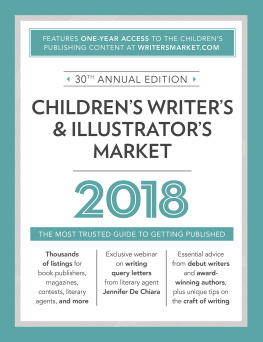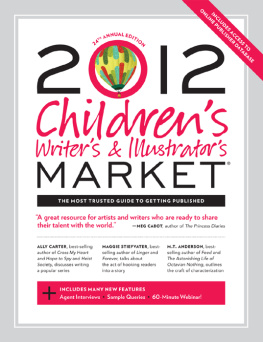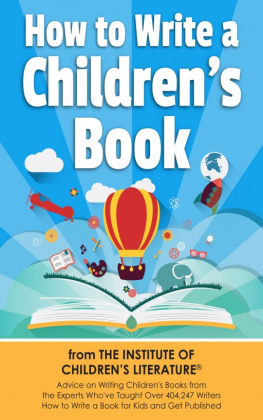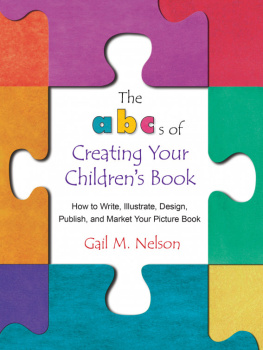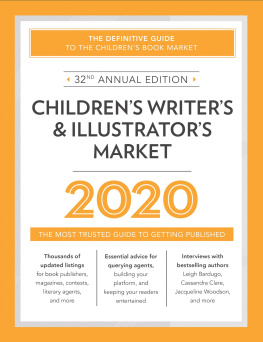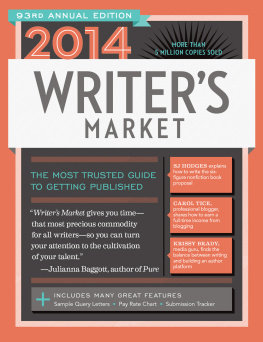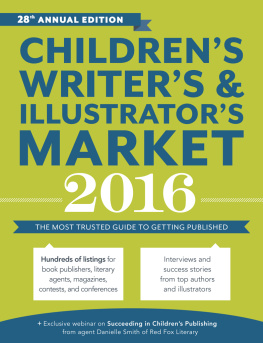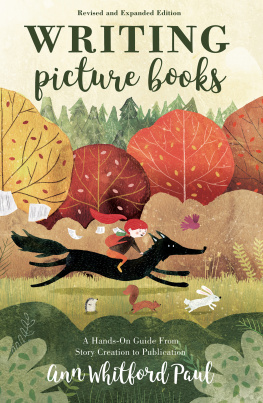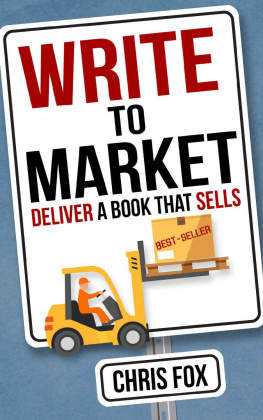A PICTURE BOOK WRITER IS BORN
To begin with I want to present to you a very common scenario that occurs at the beginning of the creation of a childrens picture book and many a childrens writers career:
1. Parent reads picture book to child.
2. Child enjoys the story and wants said book read another ten million times (or so it feels).
3. Parent, who by now is utterly exhausted and bored silly, suddenly has a brainwave. Hey! This book is so simple, anyone could write stuff like this. Why dont I have a go?
And there you have it. Another would-be picture book writer is born.
Its easy to see why picture books appear to be so easy to write. The plots are simple, the language is basic, the word counts are low and most of the characters are teddy bears. How difficult can it be?
The honest answer is very difficult indeed. Among other things, you need to know what sort of things to write about, what definitely to avoid writing about and how to fit your story into the picture book format, which is something of a skilled job in itself.
Above all you need a reasonable understanding of how the international picture book market works before you have even a glimmer of a chance of getting your book accepted for publication and from there into bookstores around the world and translated into numerous unintelligible but highly impressive- looking foreign languages.
Can you succeed? Well I did. Hundreds, if not thousands, of other childrens writers worldwide have succeeded too and so can you. Especially now you have this book, which contains about 15 years worth of writing and successful publishing experience, insider knowledge and tricks of the trade. Just a quick look at my contents list will demonstrate just how incredibly comprehensive this book is.
So first things first.
WHAT THIS BOOK COVERS
Well obviously its all about how to write and publish a childrens picture book. However, much of the advice is just as applicable to older childrens fiction as it is to picture books, especially on the topics of researching publishers, copyright, acceptances, rejections, self-publishing, vanity and online publishing. Other routes to publication via older childrens fiction, adult non-fiction and self-publishing are all discussed in the final chapter.
WHAT THIS BOOK DOES NOT COVER
This book does not cover the following types of childrens books.
ABC and counting books
ABC and counting books are normally written for babies from birth to the age of about 2 years. They usually contain very little text and no story. Im also including in this category those attractively designed (but mind-numbingly boring) little baby books which have a picture of an everyday object or animal on every page and nothing much else.
Bath books
These are often the same as baby books in content, the only difference being that theyre made of plastic so that they can be played with in the bath and then thrown away as soon as they begin to go mouldy (which doesnt bear thinking about!). Bath books have even less content than the baby books described above since the pictures are usually all boats and rubber ducks.
Board books
These are books made entirely of cardboard, as opposed to paper. They are intended to be read to, shared with and handled by babies, and the indestructibleness of the product is specifically engineered to prevent the baby eating it. Which they do, given half a chance! Again, the story content is virtually non-existent.
Novelty books
These are picture books for the very young child from birth to around 3, featuring elaborate devices such as flaps, peep-holes, pop-ups, tabs, sounds and different materials (e.g. fur). In general these books do not contain a lot of story the product is more like a toy, although there are some notable exceptions.
The reason I do not cover these categories (or genres) of books is because none of them really demand the skill and creativity of an author. And why? Simply because theres no story to write. This means they are, almost without exception, produced in-house by the publisher itself.
By in-house I mean that the entire concept, design and content of the product is created by people who are employed by the publisher. Professional authors are not normally commissioned because there is no creative story-telling work to do.
Your only chance here is if youre an illustrator, since somebody has to design and draw the pictures. More on illustrations later, but for now I will concentrate purely on picture books.
So what is a picture book?
Read on
A picture book is an illustrated story book for very young children from approximately 2 to 5 years old. There will be colour illustrations, usually on every page.
There is text (by text I mean words) but not very much. Most picture books carry just one or two sentences on each page, if that. We are not talking about a full length novel. In fact the total word count will fall somewhere between 100 at the bottom end of the scale to around 600. Of the picture books Ive had published, the shortest contained 250 words, the longest had 580.
The text will tell a story but the pictures will also contribute to the telling to a very large extent. The narrative and the pictures work together in a sort of partnership you cant have one without the other.
A childrens picture book is meant to be a shared experience between child and parent (or maybe grandparent, older sibling or teacher). This other person will be physically reading the words and pointing to the pictures. Its important to realise that the child (i.e. the person you are writing for) probably cannot read the actual words.
A picture book story (well the really good ones anyway) will be so interesting and entertaining for the child that theyll want to hear it being read over and over again. This is another important point. After youve finished reading a book that youve chosen for yourself, you will normally do one of the following:
Stick it on your bookshelf and forget about it.
Give it to somebody else.
What you will not do is reread it another 50 times. But this is precisely what a young child will expect from a favourite picture book, as all parents know to their cost. This vastly extended life expectancy means that the quality and content of a picture book have to be vastly better and more entertaining than any of its adult counterparts.
In fact I suggest you stop reading this book right now and scoot down to your local library and pick up as many picture books as you can. There is nothing like actually handling and reading a dozen or so to help you understand the product and maybe inspire you as well.
FAMOUS PICTURE BOOKS
Here are some examples of my personal favourites, all of which have been hugely successful:
The Very Hungry Caterpillar by Eric Carle.
The Very Quiet Cricket also by Eric Carle.
The Cat in the Hat by Dr Seuss.
The Gruffalo by Julia Donaldson (author) and Axel Scheffler (illustrator).
Guess How Much I Love You by Sam McBratney (author) and Anita Geram (illustrator).
Maisy by Lucy Cousins.
Where the Wild Things Are by Maurice Sendak.
Mummy Laid an Egg by Babette Cole.
Owl Babies by Martin Waddell (author) and Patrick Benson (illustrator).
The Queens Knickers by Nicholas Allen.
Six Dinner Sid by Inga Moore.
Isabels Noisy Tummy by David McKee (and anything else by David McKee).
I Am Not sleepy and I WillNot Go to Bed by Lauren Child.


